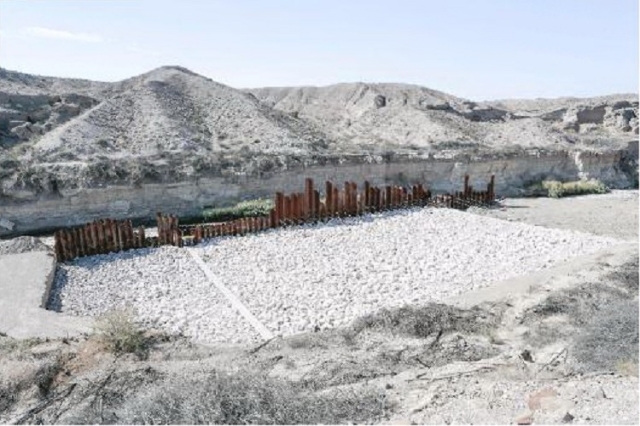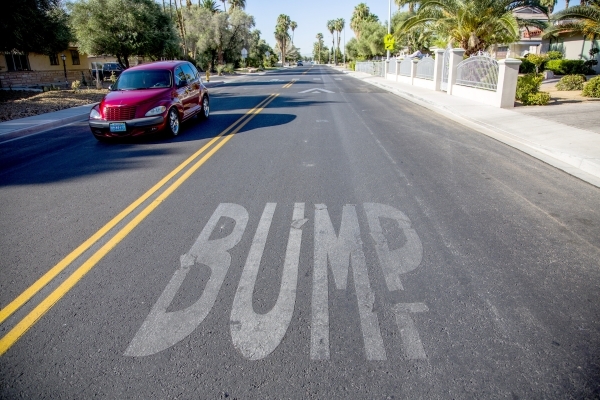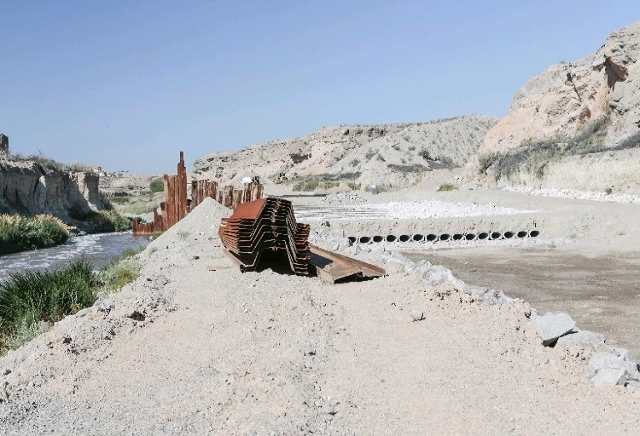Erosion project may speed up as Lake Mead sinks
The Southern Nevada Water Authority wants to step up anti-erosion work as the falling water level at Lake Mead makes the problem worse.
Federal officials have spent the past 13 years trying to slow the flow of the lower Las Vegas Wash to reduce erosion and protect a major bridge at Lake Mead National Recreation Area.
Now the Southern Nevada Water Authority wants that work to accelerate, as the falling water level at Lake Mead makes the problem worse.
The authority is lobbying for federal funding to be set aside to finish a series of weirs — also known as water-calming or step-down structures — in the last six miles of the wash downstream from Lake Las Vegas.
The National Park Service and the Federal Highway Administration completed three weirs there in 2002, and a fourth is now under construction. But current plans call for the remaining six structures, each costing several million dollars, to be built gradually over the next 15 years as money is made available for the work.
Water officials don't want to wait that long.
"We'd like to see them done as quickly as possible," said Dave Johnson, the authority's deputy general manager for engineering and operations. "SNWA's primary interest is watershed protection for Lake Mead."
As the reservoir shrinks, the wash has farther to fall to meet it. The result is a faster current and more erosion, which deposits sediment farther into the lake and closer to the intakes the authority uses to deliver roughly 90 percent of Las Vegas Valley's water supply.
More sediment can also bring more phosphorus, increasing the likelihood of potentially toxic algae blooms in the lake, Johnson said.
The Las Vegas Wash was once an ephemeral stream that filled during downpours and carried the valley's storm runoff to Lake Mead. Its flow became permanent in the late 1960s, as the Las Vegas Valley developed and the wash became an outlet for the community's treated wastewater.
Today, the wash ranks as one of Southern Nevada's largest rivers — albeit a largely man-made one — with an average flow of 153 million gallons of effluent per day.
Since the late 1990s, the water authority has built 19 flow-control weirs in the wash above Lake Las Vegas. Two more of the structures are set for completion next year, completing the authority's portion of the wash improvement program.
The $165 million effort has been funded by sales tax revenue and proceeds from the sale of federal land in Southern Nevada. That money has also paid for extensive work on the banks of the wash, which have been "armored" with rock and concrete chunks from demolished casinos and highway interchanges.
The federal government built its first three weirs on the lower portion of the wash in 2002 after Federal Highway Administration inspectors discovered erosion undermining the 420-foot-long bridge that carries Northshore Road across the wash just downstream from Lake Las Vegas.
Federal officials later determined more weirs were needed when they noticed serious damage to one of the three original structures due to erosion made worse by sinking reservoir levels.
As the Park Service noted in a 2013 assessment, failure of one of the existing weirs could start a chain reaction that would "eventually cause failure of the two other structures upstream from it, posing a major threat to the foundation of the bridge and eventually to the Lake Las Vegas Dam and outlet works."
Johnson said with the proper funding weirs downstream from the bridge could be completed in as little as six years.
It won't be easy. Bruce Nyhuis, chief of maintenance and engineering for Lake Mead National Recreation Area, said the closer they get to Lake Mead the harder it gets to build new weirs because of a lack of roads leading to the work area.
"Access does become an issue," he said.
But the weirs will eventually get built. There's just too much at stake otherwise, Nyhuis said.
"We have not only the bridge pier to worry about,'' Nyhuis said. "We have water quality."
Contact Henry Brean at hbrean@reviewjournal.com or 702-383-0350. Find him on Twitter: @RefriedBrean





















